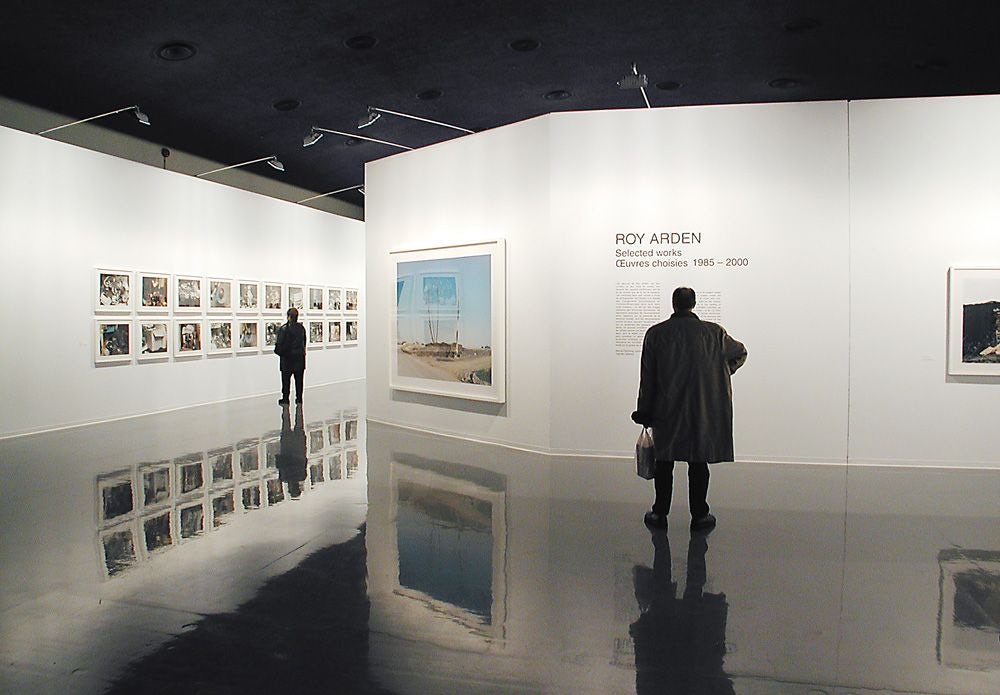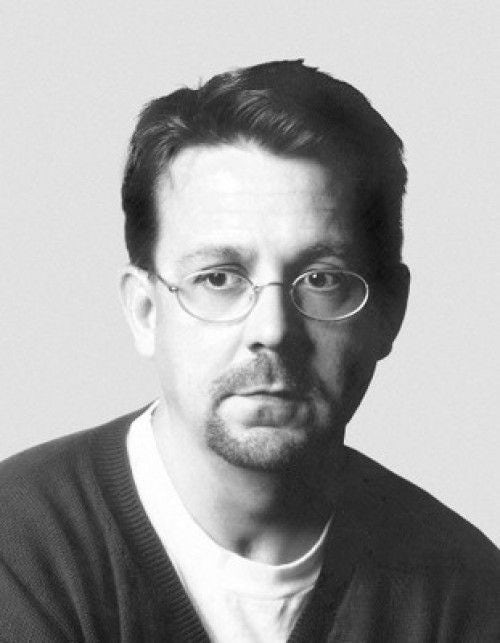
Roy Arden
Selected Works 1985-2000
2002.08.29 - 10.27
MARNIE FLEMING
To think about the city is to hold and maintain its conflictual aspects: constraints and possibilities, peacefulness and violence, meetings and solitude, gatherings and separation, the trivial and the poetic, brutal functionalism and surprising improvization.1 – Henri Lefebvre
It may be true that one has to choose between ethics and aesthetics, but it is no less true that, whichever one chooses, one will always find the other at the end of the road. For the very definition of the human condition is in the mise en scène itself.2 – Jean-Luc Godard
Roy Arden’s art work, in its subject matter and mise en scène, makes visible the « conflictual aspects » of urban and suburban life. The many sites he has chosen to photograph allude to the rapidity of economic change in British Columbia, as well as its human costs –a far cry from the glossy images of tourist brochures. The prosaic depictions of his environs are reminders of the precariousness of the social structure, with its sometimes brutal moments of reversal in which winners and losers change places. Perhaps the artist’s own practice can be thought of as a case study on the way in which the reality of one’s backyard can be a valid laboratory for art-making; one that has global resonance, while based in the realm of lived experience.

This exhibition begins with work dating from 1985 in which Arden uses archival images of historical events to examine photography’s role in the construction of memory and history. In works such as Rupture and Abjection he explores a binary format, pairing archival images with photographic monochromes. Rupture features journalistic photographs of the infamous 1938 « Bloody Sunday » police action in Vancouver combined with photographs of a blue sky. Abjection presents archival images of the internment of Japanese-Canadians and the expropriation of their property by the Canadian government during the Second World War. These stark documents are paired with monochromes of exposed, black photo paper. Both works address the ontological or fundamental nature of the photographic medium while simultaneously functioning as a new type of history painting. Unlike the history painting of the past, however, these works are questioning rather than affirmative of official history.
By 1990 Arden had moved away from using archival sources to begin a new body of colour photographs addressing what he has called « Landscape of Economy. » Returning to the role of « photographer » he examines the everyday surface of a city and its environs. As he says, « This project has been my attempt to register the transformative effects of modernity as they are revealed in an everyday experience of the landscape. » In the dispossessed figures of Cordova Street, Vancouver, or Locked-out Workers, Vancouver, B.C. we can see the continuance of theme from the archival works of the 1980’s.
If pictures such as Pulp Mill Dump, Nanaimo, B.C. remind us of Robert Smithson, or Landfill, Richmond, B.C., invokes the wastelands of Antonioni or Robert Adams, it is because Arden has very consciously derived his inspiration from the histories of photography, cinema and painting as much as from his own experience in British Columbia: « Through this work I have also sought to explore and articulate a realism which is informed by my understanding of tradition. I have drawn on artists as diverse as Dürer, Købke, Atget, Walker Evans, Robert Smithson and Pasolini. I see this art history as a toolbox of tropes, strategies and devices with which I can interpret my experience. »
Basement is a suite of colour and black-and-white photos which were made in the basement of Arden’s apartment building. The room depicted was used for almost a century as a caretaker’s workroom and as a storage for tenants’ belongings and castoffs. Arden saw it as a « museum of the rejected » and wanted to construct an allegorical and realist image of the basement through both Marxist and Freudian filters: « I was interested in both the psychological, libidinal charge of this place and its material function as a base which supports the life above. I wasn’t trying to make singular, artful compositions but instead tried to create the effect of a scanning vision –like someone looking for something with a flashlight. » As in other works, by using both colour and black-and-white, Arden aimed to frustrate a reception of the images as transparent documents and assert the fictive aspect of all photography.
In recent black-and-white works such as House on Alley, 6th Ave. Arden continues his interest in the « Landscape of the Economy » with an emphasis on form over surface. Volvo Engine and San Pedro (#1) and d’Elegance (#1) all consider the material reality of the internal-combustion engine, linking them to the earlier Abjection.
Arden has lately expanded his practice to include time-based videos that feature moments in the elusive process of flux and change. In Juggernaut we see and hear the innards of a car engine as it idles or speeds up. The image is hypnotic, producing associations of bodily organs and sputtering breath. Citizen stresses dialectical movement, complexity, conflicts and contradictions. The « citizen » sits on the median of a major thoroughfare, indifferent to passing motorists. The camera, located in a car that continuously circles the subject, is fixated on him. An almost predatory dance ensues between the « citizen, » the passing traffic and the camera/car. The treatment of the digital image both slows and exaggerates this looped scene, providing a ceaseless flow of time and space.
Arden’s work is preoccupied with alternative and/or counter-dominant positions and locations. He seeks to heighten an awareness of a rich and historically informed vocabulary in photography, while his vision reminds us of the need for imagination and intellectual rigour in thinking about the everyday and the life lived.
Roy Arden: Selected Works 1985–2000 was organized by Oakville Galleries for an exhibition held February 2 to April 7, 2002. The catalog accompanying the exhibition is also produced by the Oakville Galleries.
